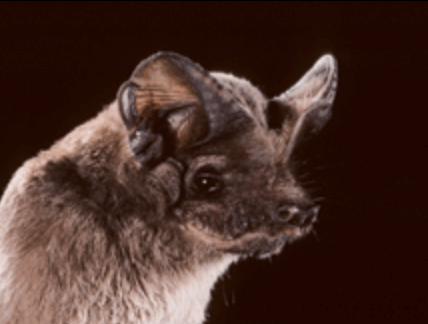|
Susan Andersen, a resident of RillitoBend since 2006, and our most prolific blog contributor, is leaving. This piece was written in July, so the bats are also nearing the end of their stay. Make sure you have witnessed this spectacle if you haven't already. Original Title WE’VE GOT HOT SUMMER NIGHTS!! |
| Photo from the ASDM website |
The most numerous species is probably the Mexican free-tail bat (Tadarida brasiliensis), but there are about 18 different species seen in Tucson in the summer. (Melanie Bucci, curator UArizona Museum of Natural History).
There is an enormous colony of bats that live under the Campbell Street bridge, in our neighborhood. From now until mid September or October. Each and every night they ‘flow’ out from under the bridge towards the sunset and head out for a meal of insects. It is WONDERFUL to stand on the path by the Rillito River path and the Campbell Street bridge, just by Trader Joe’s and watch them ‘flow’ out from under the bridge. The sun is usually just gone down past the horizon and out they come! Hundreds, thousands!!
This is a spectacular piece of summer fun and wonder in Tucson. Don’t miss it!
This is a spectacular piece of summer fun and wonder in Tucson. Don’t miss it!
The Mexican Free-tailed Bat: A few fascinating facts from the Arizona-Sonora Desert Museum fact sheets
- A medium sized bat, their fur is reddish to dark brown or gray in color. They have broad, black, forward pointing ears, and wrinkled lips.
- Most of these bats migrate south to Central America and Mexico during the winter.
- They prefer to roost in caves, but will also choose attics, under bridges, or in abandoned buildings. They choose roosts near water. The water attracts the insects they eat, as well as allowing them the opportunity to drink.
- Free-tail bats consume enormous amounts of moths and other insects. Some roosts are known to contain millions of bats. In those colonies it is estimated that 250 tons of insects can be consumed every night.
- Snakes, raccoons, house cats, owls, and other predators sometimes manage to gain access to the roosts. If a baby falls to the cave floor the mother will not come to its rescue giving predators a chance for a quick meal.
- A single free-tail baby bat is born during the summer. Young Mexican free-tailed bats roost separately from their mothers. In the large maternity colonies of Mexican free-tails, the mother must find her own pup among the thousands. It is thought that she locates her baby by recognizing its individual call. These bats may have a life span of up to 18 years.
- The females decide when to give birth when the conditions are right.
0 Comments
Your comment will be posted after it is approved.
Leave a Reply.
RillitoBend Rambles shares images and stories of our neighborhood that support our core value of respect for our natural world. Participation is open to all, whether by subscribing to posts, commenting on stories, or submitting your own rambling adventure for publication.
Please sign up below to receive our postings
Please sign up below to receive our postings
Archives
April 2025
August 2024
June 2024
April 2024
August 2023
July 2023
June 2023
March 2023
February 2023
December 2022
November 2022
October 2022
Categories
All
Animals
Bobcats
Flowers
Gardens
Insects
Invasives
RVNRP
The RillitoBend Neighborhood also has a mailing list to keep people up to date on the goings on in the 'hood' Sign up Below





 RSS Feed
RSS Feed